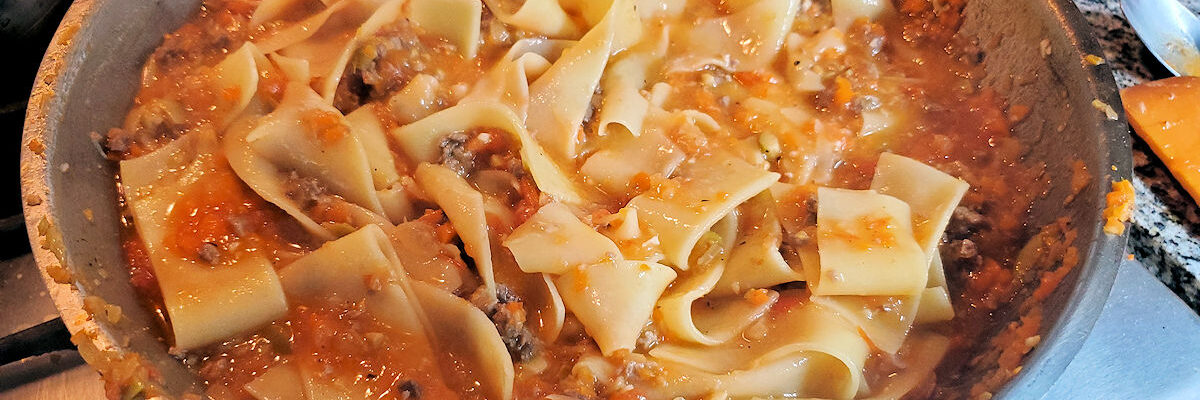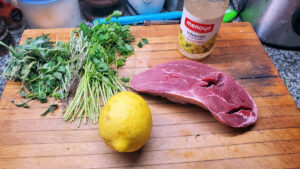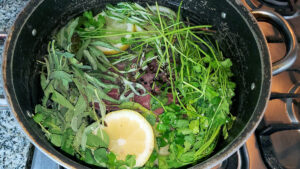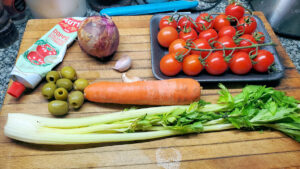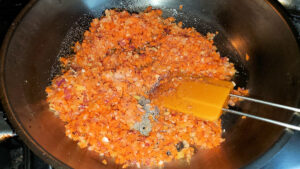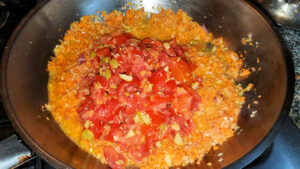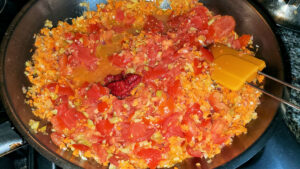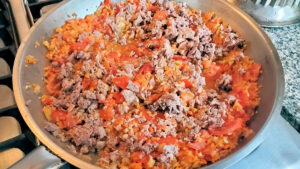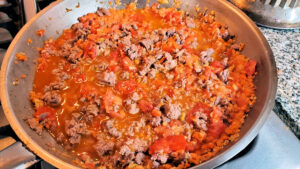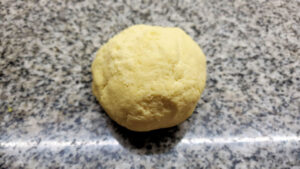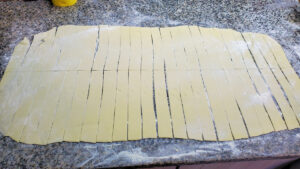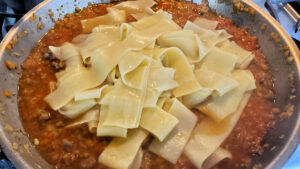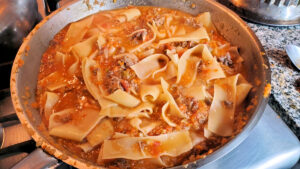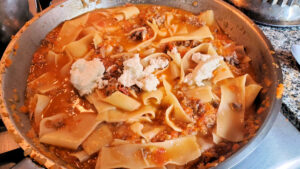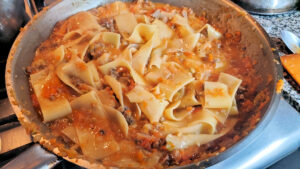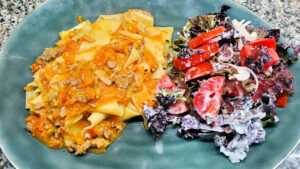Getting back to watching more of Stanley Tucci’s adventures around Italy. I note, here in the second season, with the episodes I’ve watched so far, that he’s putting less focus on the details of preparation of dishes, and more on his enjoyment of them. So there are fewer details to work with. Still, I can suss out the general approach, and of course do a little research on my own to figure out some of the behind the scenes parts of what he’s eating. On to episode 3 of season 2, as heads to Umbria, in central Italy, the “green heart of Italy”, where dishes are created around an abundance of pork, wild boar, and goat. The dish? Pappardelle con ragú di cinghiale.
It was not easy to find a piece of wild boar here, which surprised me – there are several specialty butchers who would normally have it. Maybe it’s the time of year, I guess it’s probably more prevalent in fall than spring. And, unfortunately, I could only find a cut of boar that’s very lean. For this dish to truly be right, you need something that has a lot of fat and connective tissue that will break down over several hours of low heat braising. So I had to adapt, as you’ll see. The only thing we learn in the episode is that the boar is braised in “lemon, white wine vinegar, and herbs”. I picked a mix of rosemary, sage, oregano, and parsley.
Into a pot, along with some salt and peppercorns, brought to a bare simmer and cooked for about two hours. This cut of boar just isn’t going to reach that point where you can sort of shred it with a fork, the “pulled pork” approach, so when it came out of the braise, I chopped it up.
The rest of the ragú consists of classic aromatics – onion, garlic, carrot, celery – along with tomatoes (I love these small “vine-ripened tomatoes”, so used those), green olives, and some tomato paste. Salt and pepper, of course.
Finely chop the aromatic vegetables (my food processor got a workout on this recipe), and saute in olive oil with a little salt and pepper, until soft.
Add coarsely chopped tomatoes, green olives, and the tomato paste and cook for about ten minutes to soften the tomatoes.
Add the chopped boar and a couple of ladles of the braising liquid. Cook slowly for about an hour, stirring regularly, and topping off with a little more of the braising liquid as needed.
Semolina pappardelle, just fine semolina flour and water, formed into a dough, let it rest, then roll it out and cut into roughly two centimeter width ribbons. You can leave them long, I prefer to cut them to about fifteen centimeters, or about six inches. Easier to serve and eat.
Boil them up in lightly salted water. Just about two minutes, because being fresh pasta these will cook fast. If you’re using dried, cook it to about two minutes short of the recommended cooking time. Then add to the simmering sauce along with a ladle of the pasta water.
Finish cooking in the sauce, letting it absorb the liquid and flavors – just one to two minutes.
You remember our “cheese cream” approach – here, grated sheep’s milk pecorino romano turned into a paste with a little bit of the hot pasta water. Off the heat!
And, toss and stir to dissolve the cheese through the sauce.
And, serve! You could grate more cheese over the top. You could sprinkle with a little of freshly chopped herbs, but I don’t think either is necessary in this case. We ate it with a lovely salad of red lettuce, plum tomatoes, and onion in a creamy parmesan dressing. Absolutely delicious. I think I’d use more green olives than I did if I were to remake this. I basically just used what I had left in a jar in the refrigerator – I’d probably double the amount. And I definitely would have liked the texture of the “pulled pork” style meat, if I can find a cut like the shoulder, which is what I really wanted.
